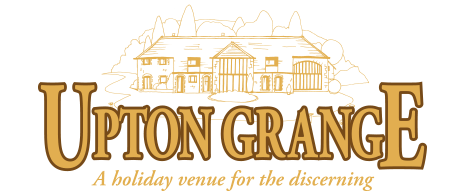You can’t really say you’ve explored Dorset if you’ve never ventured across the causeway to Portland.
Or the Isle of Portland, to be more correct. Unlike most other islands, you don’t need to leave dry ground to get there. By a quirk of ancient geography, the massive rock that is Portland is attached to the mainland by a thin strip of pebbles known as Chesil Beach.
Despite there being a road to Portland, it can feel like a neglected part of the county, in more ways than one.
Parts of the island look abandoned. Others seem to be stuck in time. Some spots have an other-worldly feel.
There’s a magic to Portland that’s hard to put into words. But that magic is, perhaps, slipping away as the twenty-first century imposes itself. New houses, more visitors and the domestication of the wild places are all hemming in the island’s intangible mysteriousness.
This is the first in a series of articles that explores Portland.
Church Ope and the Pirates' Graveyard
A word of warning – it’s only accessible on foot and whichever way you approach it, there are lots of steep steps. Sensible footwear is recommended – although you may want to take this off when you reach the waves at the foot of the cliffs.
Church Ope is dominated by the stern stone faces of Rufus Castle, also known as Bow and Arrow Castle. It’s called Rufus because it was built for William Rufus, the flamboyant and bawdy second Norman king of England.
William met an untimely end in the New Forest, hit by an arrow in what may have been a royal assassination. The castle’s alternative name, Bow and Arrow, doesn’t relate to this incident, but to the high, narrow windows in the ruin.
Nor would William recognise the ruin that remains today. His castle was replaced by a later one about 350 years after the original was built.
You can’t visit the ruins, as they are on private land.
The ruined church and graveyard of St Andrew
Were they targeting the church of St Andrew, which overlooked the cove? We can’t be sure, but there was a Saxon church on the site.
It was later replaced by a more substantial building in the year 1100 – shortly after the first version of the neighbouring castle had been erected. A separate tower was added in 1470 and you can still walk through the arch of its doorway.
There’s not much left of St Andrew’s because the church was abandoned in the early 1700s. A succession of landslips persuaded local people that it really wasn’t a suitable site for a church building and a replacement was built elsewhere.
If you can find it, St Andrew’s now comprises a few low stone walls, the tower entrance arch, and a scattering of graves. Some are marked with a skull and crossbones, which has given rise to the story of it being a pirates’ graveyard.
Were any of those buried there actual pirates? Probably not in the sense you imagine, with a sailing ship, a parrot and an eye patch. But some may have been involved in the smuggling trade, or worse, wreckers.
The seas around Portland can be treacherous and ships were often wrecked. Local people collected up goods that were washed ashore from wrecks – often ignoring the desperate pleas from injured sailors.

How to get to Church Ope
The nearest parking is Church Ope Car Park, or on the nearby roads. It’s close to Portland Museum (postcode DT5 1HS), which you walk past on the main route to Church Ope.
This route takes you close by Rufus Castle, and under an arch which opens to a wonderful viewpoint which looks east along the coast.
From here, descend the steps down to Church Ope cove itself. Part way down the steps is a sign to the church – it’s easy to miss this! This route is a narrow path, with some steep, rough stone steps, up to the church site.
Other places to explore near Church Ope
Portland Museum – with its fantastic collection of local history pictures and artefacts.
Easton – the small town in the centre of Portland. It’s a short walk from the Church Ope Car Park.
Pennsylvania Castle – you can’t visit, but if you park at Church Ope, you can’t miss the ‘castle’ opposite. It was built as a mansion in the late 1790s by John Penn, grandson of the founder of Pennsylvania in the USA. Today it’s a venue you can hire for events.
Southwest Coast Path – the steps down to Church Ope from Rufus Castle are part of the South West Coast Path. This route makes it easy to explore the rugged coastline in this area.

